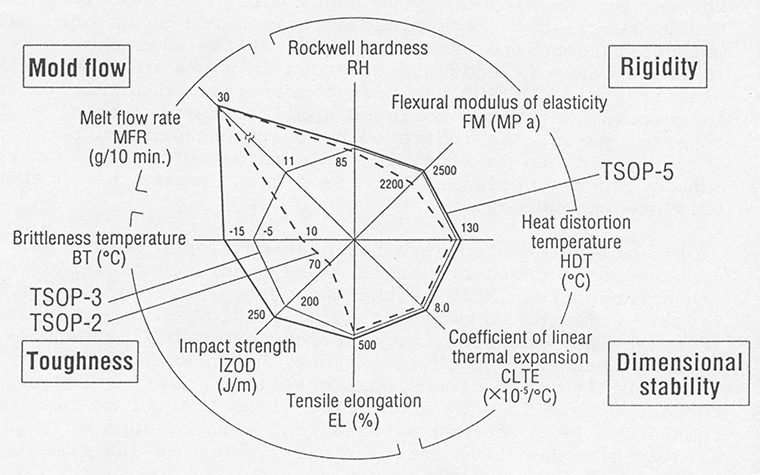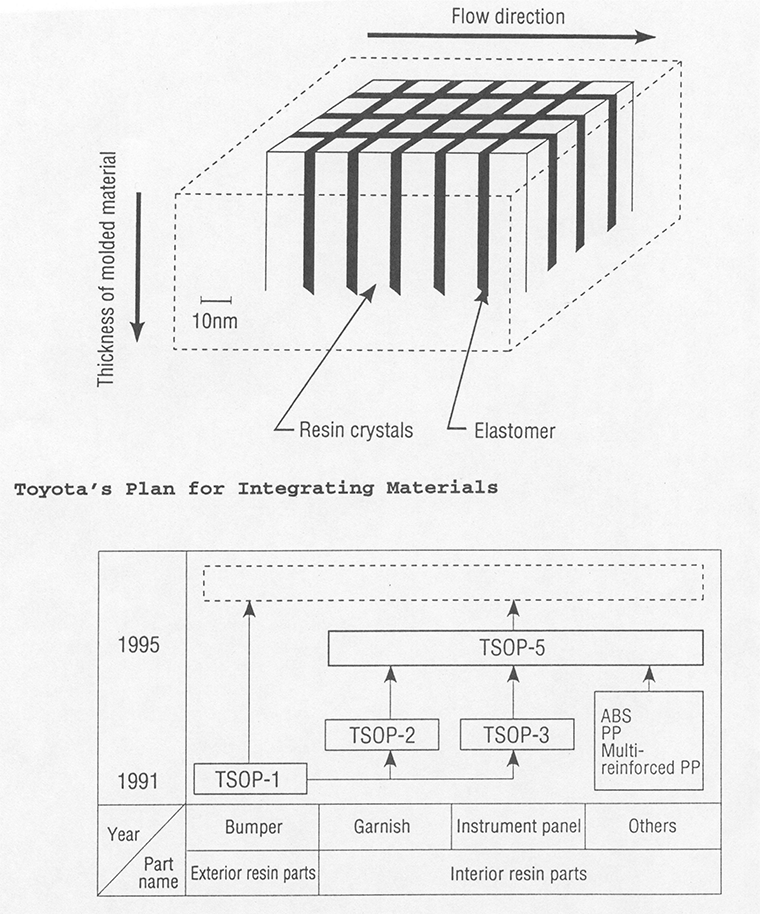Sep. 13, 1995
Toyota Develops New High-Performance Resin Material
for Use in Automobile-Interior Parts
Tokyo―TOYOTA MOTOR CORPORATION announced today that it has, in cooperation with nine resin manufacturers, developed the world's first resin material based on a new crystallization theory. The new material (TSOP-5), which is for use in automobile-interior parts, was developed using proprietary Toyota molecular design technology. Among its many excellent properties are superb heat and impact resistance, excellent mold flow, and recyclability.
Having always paid special attention to the environment in its automaking, Toyota has worked continuously to improve technology for recycling resin parts. In 1991, for example, the company developed Toyota Super Olefin Polymer (TSOP), a highly recyclable thermoplastic resin based on an original molecular composite structure known as the elastomer matrix, in which resin islands are arranged in a sea of rubber-like elastic bodies. TSOP has been commercialized mainly for use in bumpers, but has also found applications in vehicle-interior parts. As indicated by the increasing number of inquiries Toyota is receiving from major automobile and resin manufacturers overseas, there is a great amount of interest in this new technology.
TSOP's molecular structure has been developed into a new nanocomposite resin structure whose quadratic-pillar crystals are arranged regularly at the nanometer (billionth of a meter) level. Compared to existing multi-reinforced polypropylene (PP), the new material improves many desirable properties, such as heat and impact resistance, hardness, rigidity, recyclability, and dimensional stability. In particular, it increases mold flow by about five times that of multi-reinforced PP. The new material can thus be applied to a wide variety of automotive interior parts, such as instrument panels, trim, and garnishes.
The new material also enables the 10 or more different resins used in vehicles to be reduced to a single material, thus contributing greatly to resin-parts recovery and recycling.
The material is also expected to be widely used because it enhances productivity. Its excellent physical properties also enable optimal design leading to lighter-weight parts.
Toyota will report the results of its research on the new molecular composite at a meeting of The Society of Polymer Science, Japan, scheduled from September 17. The company intends to gradually increase the number of models utilizing the new material, and will promote use of the new high-performance resin.
Special Features of TSOP-5

Crystal Structure of TSOP-5





